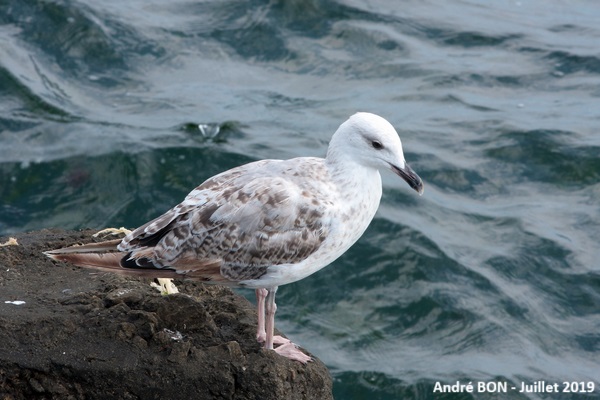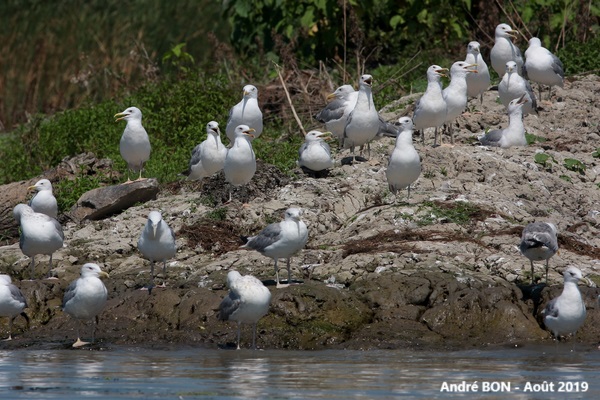

| Caspian Gull (Larus cachinnans (Pallas, 1811)) |


|
|
Scientific name: Larus cachinnans (Pallas, 1811) Common name: Caspian Gull French name: Goéland pontique Order: Charadriiformes Family: Laridae Size: Body size: 56 to 68 cm; Wingspan: 137 to 155 cm; Weight: 680 to 1590 g. Habitat: Rocky coasts, rocky islands, beaches, dunes, lake and river banks. Food: Small vertebrates, aquatic or terrestrial invertebrates, rubbish in rubbish dumps. Nesting: The Caspian Gull nests in colonies. The nest is a rough assembly of plant debris placed on the ground. The female lays 2 or 3 eggs between mid-March and April. Migration: In winter, Caspian Gulls migrate to South and Southeast Asia, the Middle East, Northeast Africa and Western Europe. Geographic area: Breeding from the Black Sea to the Caspian Sea, eastern Kazakhstan and as far as north-western China, expanding to Central Europe. |
The Caspian Gull was formerly considered as a subspecies of the Herring Gull (Larus argentatus) observed in the east. It is now recognized as a separate species since the 2000s following genetic analysis. It is sometimes difficult to identify it from the Herring Gull (Larus argentatus) and the Yellow-legged Gull (Larus michahellis). It is characterized by long, thin and pinkish/yellowish legs. The head is small with a sloping forehead and a small eye. The chest is quite strong. The bill has roughly parallel edges with a weakly marked gonydeal expansion. In breeding plumage, the back and wings are medium grey, the belly, breast and head are white. In breeding plumage, Herring Gulls have very pink legs and Yellow-legged Gulls have very yellow legs. Identifying juveniles do requires some experience. |
| [To know more about the Caspian Gull] [Next picture] [Top] |

|
I haven't made much progress in identifying young Gulls and the Black Sea shores make the presence of Caspian Gulls more likely. The eye is really small. The head and neck are thin. The legs are long. The bill is medium, with parallel edges and no pronounced gonydeal angle. I am just intrigued by the rather brown colour of the tail feathers. I expected them to be black. So I think this one is indeed a Caspian Gull. |
| [To know more about the Caspian Gull] [Previous picture] [Top] |

|
A small head with a sloping forehead, small eyes, legs that are neither really pink nor really yellow, the gulls in this group have all the characteristics of the Caspian Gulls. |